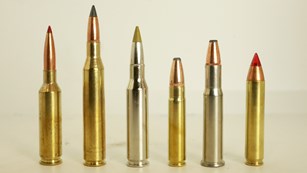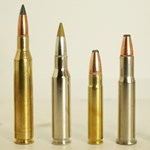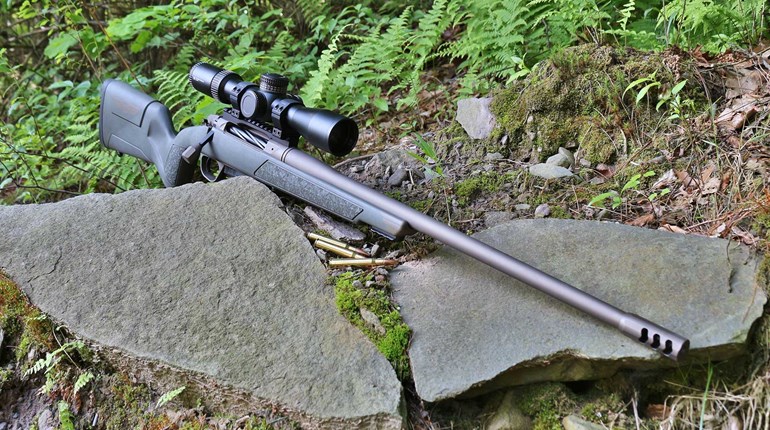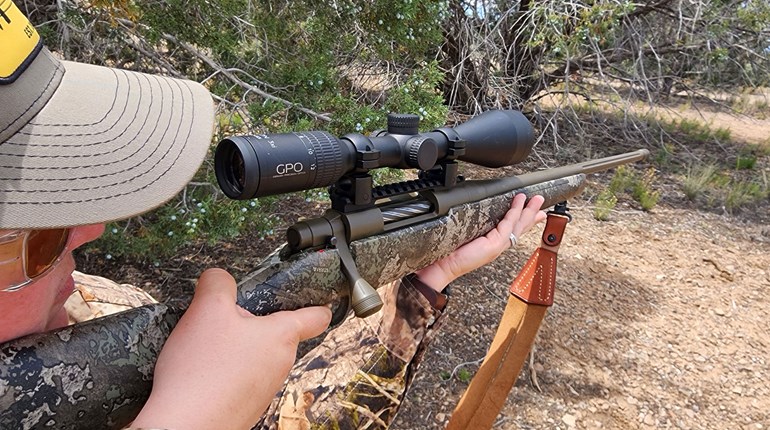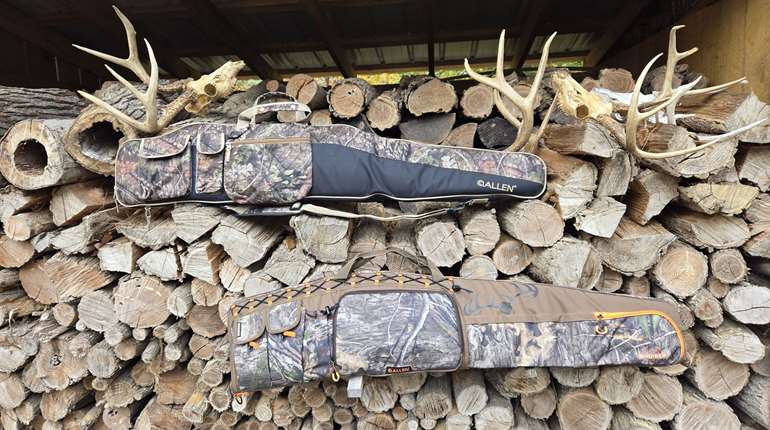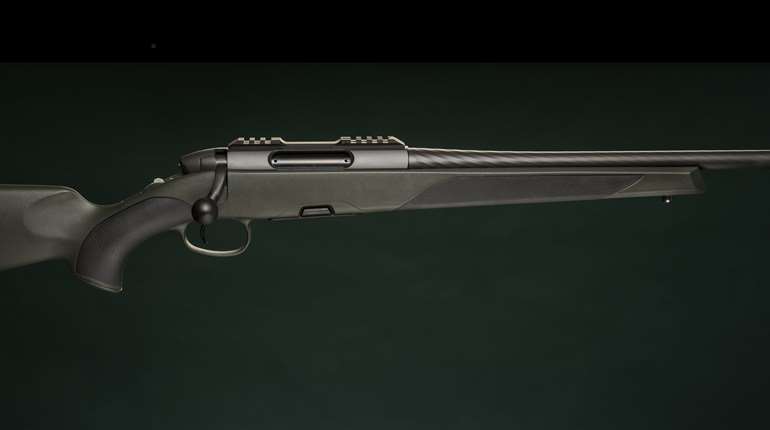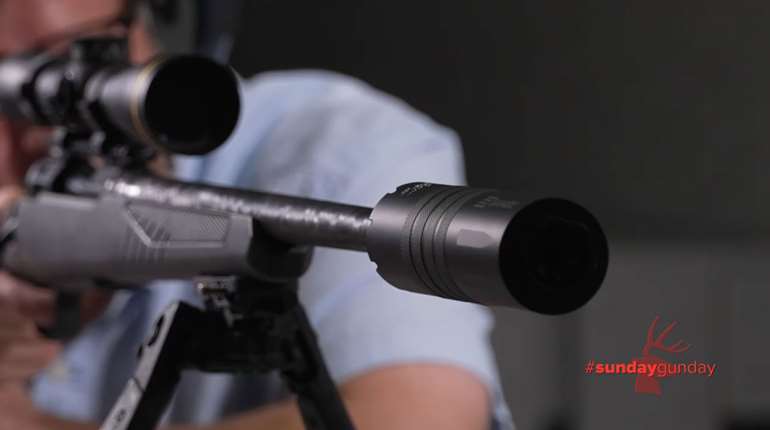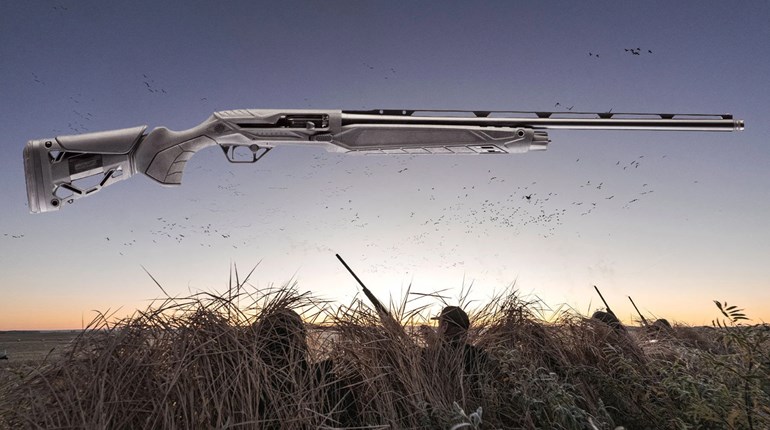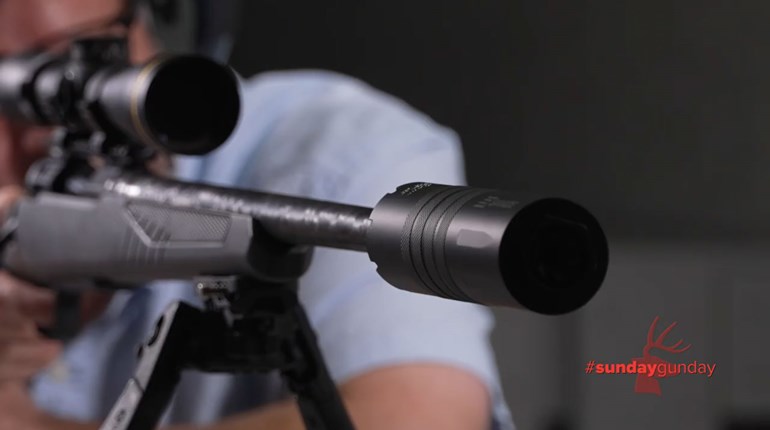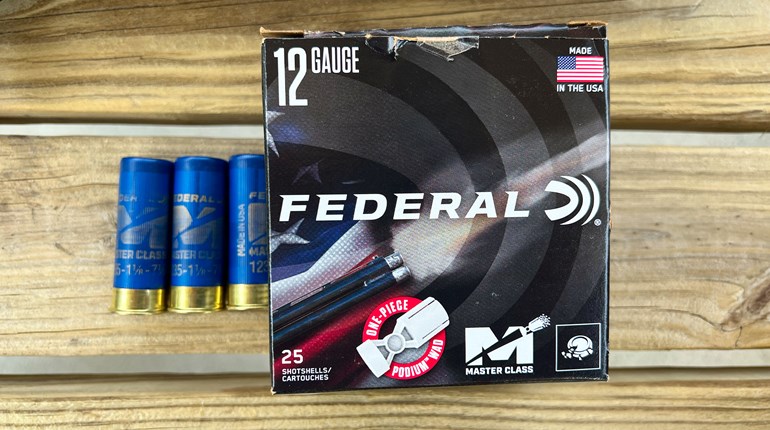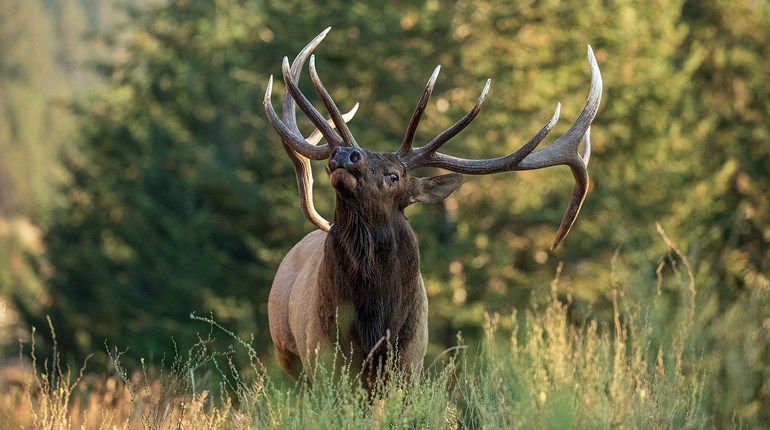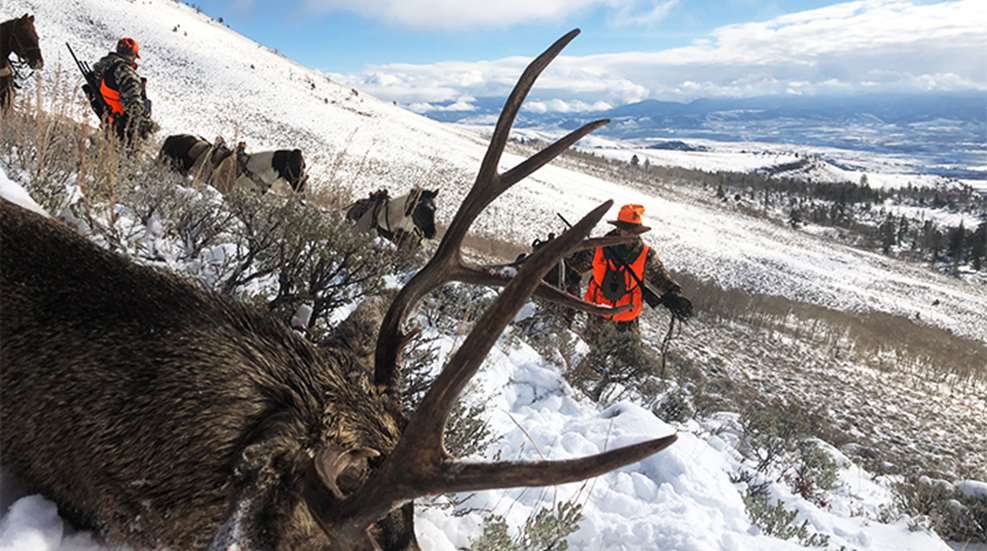
It was bitter cold, so cold that the snow squeaked under our boots as we climbed through the darkness. We’d started early, arriving at the Colorado trailhead several hours before dawn, hoping to beat the crowds up the mountain and be in position overlooking a high-country basin at dawn. There was a big buck living there; we’d seen him twice in the last few days of hunting, and he was worth the effort. So we climbed, our breath coming in huge steamy bursts from the effort.
As we climbed, other vehicles pulled into the trailhead below, and other hunters began the climb. This was a popular public hunting area, and pressure was high. Nonetheless, there was room enough for everyone willing to work for it. Dawn was sliding cold blue light across the basin by the time we made it to our destination in the backcountry then carefully set up in some boulders. The big buck’s basin lay before us, our rifles pointing deadly fingers at his lair. We were concerned, though, by three hunters who had followed our tracks up the mountain and now seemed intent on climbing into our hip pockets.
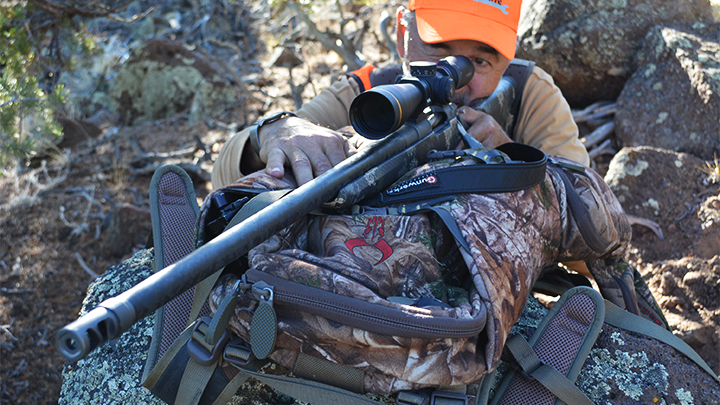
The three hunters knew we were there, had seen our dark figures climbing the vast white snow-covered slopes toward the basin. Now, they shuffled through the snow ’til they were 10 yards behind us, stopped for a moment then walked right past us and into the big buck’s territory. A few more seconds and they would blow every big-game animal out of the basin, and our rifles were now pointing right at their backs. It was the most blatant display of disrespect I’d personally ever witnessed while hunting. I reached up and swiveled my rifle barrel to the side. “Hey,” I whisper-shouted, “What are you doing?”
The leader looked at me: “Going up there,” he said, indicating the basin.
I pointed out that we were already set up to hunt the basin, and they would ruin our morning hunt if they continued. We did not want them to put themselves at risk by walking right into our zone of fire. They didn’t care, and continued onward in complete disregard of every written and unwritten rule of hunting ethics. Disgusted, we watched as they blew out the basin and blundered around, oblivious to the deer and elk that moved out ahead of them. I’ve wished a thousand times that I had spoken up and “read to them from the book,” as the old timers say. Those hunters needed a lesson in respect and ethical behavior.
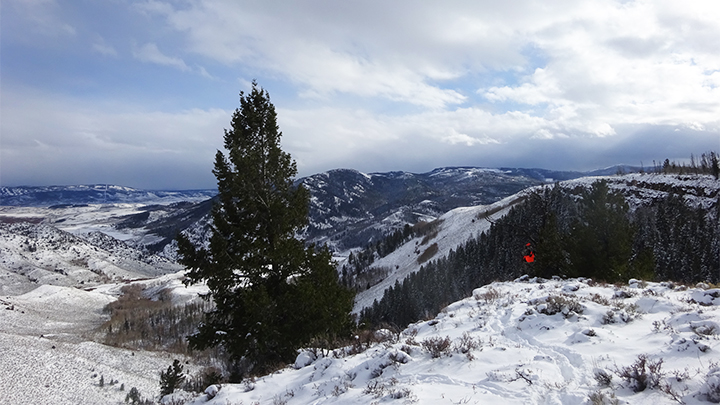
In this day of burgeoning human populations and the development that brings, public hunting lands are experiencing more and more pressure each year. In many instances, outfitters or affluent individuals are leasing or even purchasing private land, making large swaths of it that perhaps was previously accessible to the hunting public now off-limits. In response, the hunting public turns to public hunting lands. This makes now an especially good time to remember that respect and good ethics are vital to the quality and survival of the sport we love. Here are some simple but significant rules the hunting community I am part of has followed for many years. On public hunting ground, they are as important now as ever.
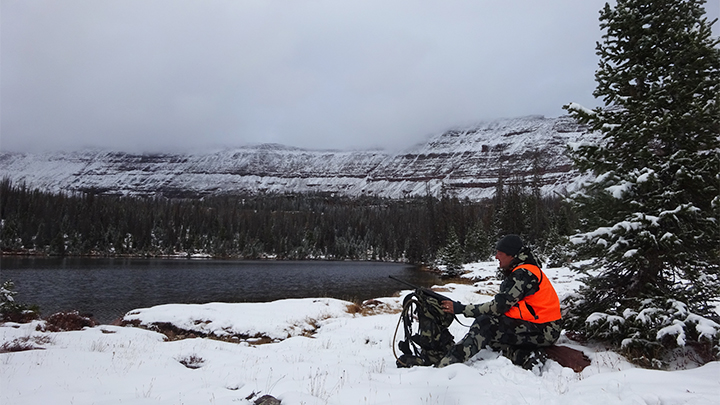
First Come, First Served: This rule is as old as the hills, and just as firm. If another hunter arrives at a water hole, glassing vantage point, meadow or whatever before you, give him a respectful wave and move someplace else to hunt, trying your best to leave “his” hunting area undisturbed. This actually works to your benefit in addition to being the ethical thing to do; as soon as he tags out he won’t be messing around in “your” woods anymore.
Don’t Sabotage: If you discover another hunter in the process of hunting one of your favorite areas, or stalking an animal you really wish to take, do not sabotage his attempt. There are too many documented cases of high-profile players in the Western hunting scene doing this to protect some particularly special animal until a wealthy hunter arrives to shoot it. Don’t stoop to that kind of behavior. Respect your fellow hunter and give him his chance. One of the most ethical and magnanimous actions I’ve personally experienced occurred during a once-in-a-lifetime any-tool Utah bison hunt I’d drawn in 2007.
I elected to hunt with a longbow, despite the enormous challenge it added. Opening morning I was stalking a herd when three other hunters snuck onto a rocky point within easy rifle range of the bison. They were preparing to shoot when one of them spotted me stalking the herd. Foregoing a golden opportunity to fill all three tags, they set aside their rifles and watched as I snuck in and arrowed a buffalo then they carefully slipped away and left. I’ll be forever grateful to them for that; good opportunities to stalk within longbow range of buffalo are few and far between. Had they blown my setup I may never have found another.
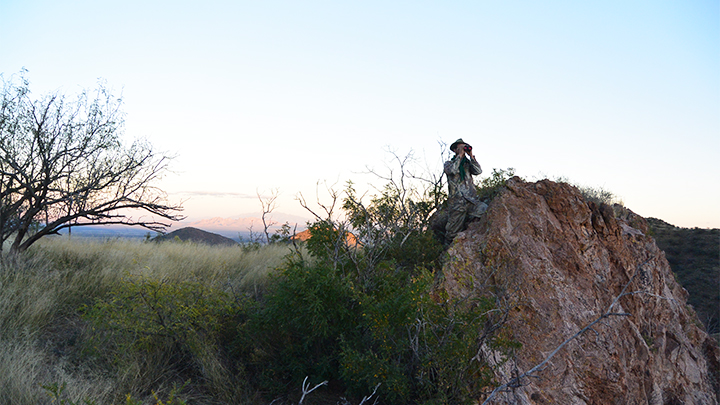
Don’t Horn In: Don’t intrude on another hunter’s setup. For instance, if you discover a team of elk hunters working a hot bugling bull, don’t slip into the sidelines and shoot the bull as they call it toward their setup. Give them time and space to work.
A Race Is OK: Sometimes you’ll spot a distant buck or herd of elk. On public land, your best strategy is to close the distance as rapidly as you can until you’re within good shooting range. Often, other hunters will be doing the same thing, and whoever is in the best physical condition wins the race. Of course, keep in mind the previously mentioned rules and don’t cause trouble for someone who is obviously there ahead of you. Also keep in mind your marksmanship and ethics and do not shoot beyond your maximum effective range. But if all things appear about even, it’s fair game to rattle your hocks toward the game, trying to beat your fellow public-land hunters to the shot.
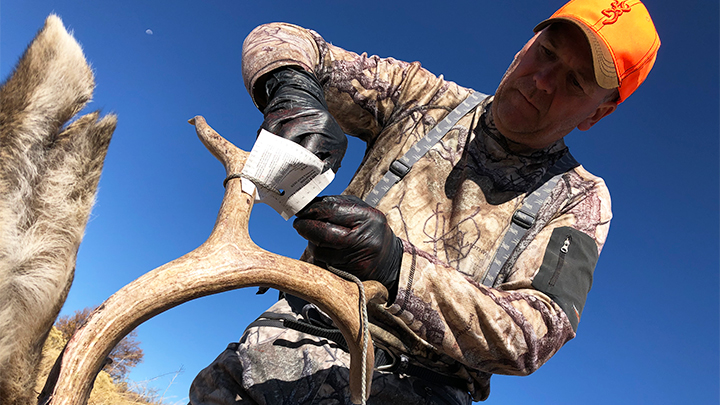
Appreciation, Not Resentment: If another hunter kills an animal, shake his hand. This can be hard, especially when the hunter shoots an animal you’ve worked hard to try to take yourself. It’s important, though. If you find yourself in this situation, be sure to congratulate the other guy. Admire the animal, take a few photos and if you have time, offer to help him pack it to his truck. Who knows? You just might end up with a new friend.
Respect Skill: Most of the hunters I compete with are pretty hardcore, because the public-land areas I hunt are rugged, hard-to-hunt, hard-to-access locations. If I find another hunter there, I know he’s likely a hardcore hunter with significant skill. Where practical, I try to make his acquaintance and get to know him or her a bit. Who knows? I might learn some new skill or technique from this hunter or make a new friend. Showing respect for this kind of hunter rather than resenting the fact that he was tough and smart enough to make his way into your honey hole is the right thing to do.
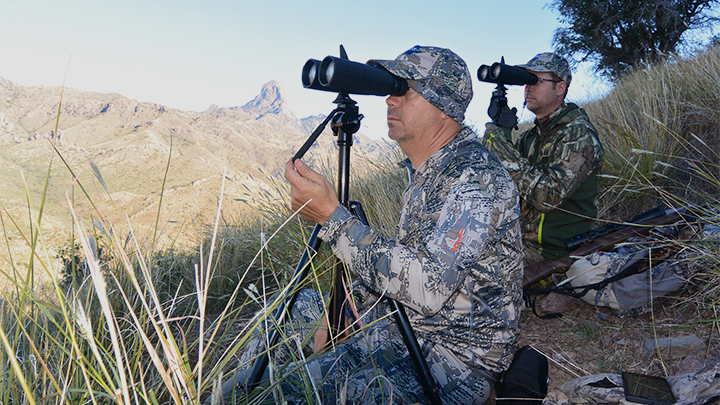
Respectfully Educate: If you encounter unethical behavior while hunting, make an effort to respectfully educate the perpetrator. If you’re lucky, he’ll just be ignorant of good ethics and will listen and learn. But he may be a jerk. If you confront such a person, make sure you have a witness and record the encounter on your phone, then turn in a report to the authorities. Do not approach an unethical person from a “high-horse” position; that never works. Approach such a person with knowledge of ethics and game laws, try to reason with him and then, if you must, call the cops. Always carry yourself with dignity; never give up your own composure to indulge in a shouting match. That just makes you an additional idiot.
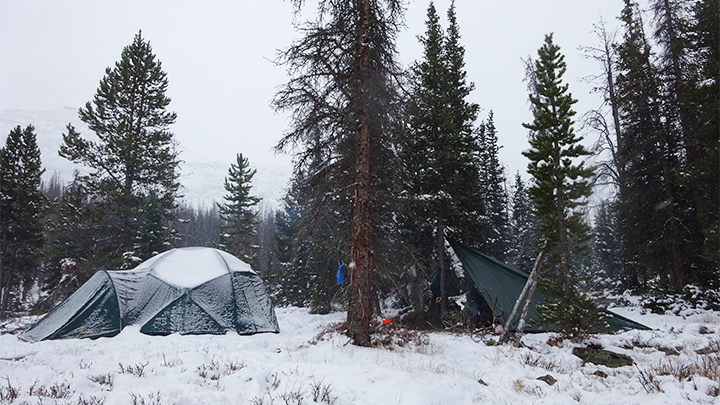
Don’t Camp By Water: This is a simple mistake made by lots of hunters, and is only a big problem in arid areas with limited water. Remember, wildlife and livestock need to drink, and many will not approach water with a camp nearby, even under cover of darkness. In arid regions, camp at least a quarter-mile from any water source.
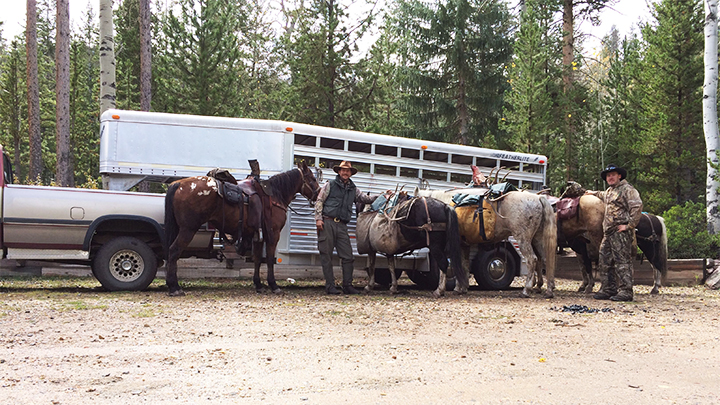
Don’t Crowd: By definition this is unavoidable, because almost all good public hunting grounds are crowded, but try not to crowd other hunters. If you find someone set up on a meadow or hilltop, go set up on a different meadow or hilltop, or at least 600 yards away, if you must hunt the same place. Try to give other hunters room and hope that they will extend the same courtesy to you.
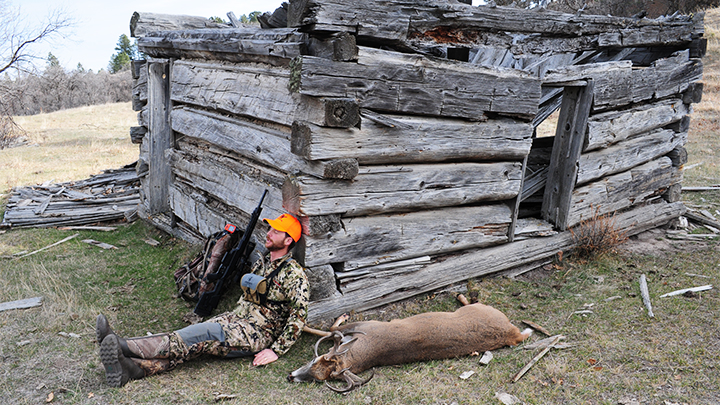
Help Out: Always give a hand when you can. Help change a tire. Pull someone’s truck out of the mud if they’re stuck. Offer to help drag or pack an old man’s deer off the mountain—or even a young man’s deer. Give a hand. Treat other hunters like a friendly neighbor, because if you think about it, that’s what they are.
Want to read more from Aram von Benedikt? Check out the following articles:
• Journal This Year: How to Record Recent Adventures and Plan Upcoming Ones
• Backcountry Survival: 3 Tools You Should Always Carry
• .30-06 Springfield: Is it Still the Best All-Around Big-Game Hunting Cartridge?
• 10 Great Christmas Gifts for Hunters
• How to Field Judge a Mule Deer in 30 Seconds
• How to Call Elk: Strategy, Sequence and Setup
• How to Set Up a Ground Blind for Bowhunting
• Backcountry Mule Deer Hunting: Tools and Tactics
• Tips and Tactics for Hunting the West
• How to Prep for Elk Hunting: Physical Fitness, Mental Toughness, Shooting Skills and Shot Placement
• Hunting African Plains Game: How and Where to Place Your Shot
• Dream Hunt: How to Make an African Safari Come True
• Top 5 Backcountry Hunting Rifles
• Hunting Cartridges: Rising Starts of the New Millennium
• Tips and Tactics for DIY Hunting and Fishing in Hawaii
• Peccary Quest: Where and How to Hunt Javelina
• Tips and Tactics for Hunting Western Cottontails
• How to Convince Your Wife to Let You Buy as Many Guns as You Want
• Backcountry Survival Tips: How to Deal with Disaster
• DIY Backcountry Hunting Tactics and Gear
• How to Be an Ethical Long-Range Hunter
• Tips and Tactics for Hunting Coues Deer
• Essential Stalking and Still-Hunting Skills
• A Beginner's Guide to Traditional Bowhunting
• 6.5 Creedmoor Proven: How Does It Actually Perform on Big Game?
• How Hunting Rifles & Gear Have Evolved Over the Last 50 Years
• How to Sharpen a Knife
• How to Set Up Your Rifle and Scope for Long-Range Dialing
• 7 Common Predator Hunting Mistakes to Avoid
• 6 Tips for Hunting Public-Land Mule Deer
• 10 Tips for Bowhunting Elk
• Tips and Tactics for Bowhunting Mule Deer
• How Do You Build the Ultimate Western Big-Game Rifle?
• 10 Ways to Prep for Your Next Western Big-Game Hunt
• Tips and Tactics for Hunting Canyon-Country Gobblers
• 12 Tips for Shed Hunting the West




